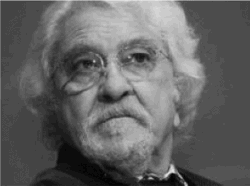
Dariush Shayegan, the eminent Iranian philosopher, passed away on 22 March 2018, at the age of 83, after spending nearly two months at a Tehran hospital following a cerebral stroke. Born in Tabriz on 2 February 1935 to a Georgian mother and an Iranian Azeri merchant father, Dariush Shayegan grew up in a multi-lingual environment. From his early childhood, Shayegan was fluent in Azeri, Persian, and French. He attended the French Saint Louis School in Tehran, which was managed by the Lazarist friars. After several years in an English boarding school, he studied comparative philosophy, Sanskrit, and literature in Geneva. After his return to Tehran in the early 1960s, Shayegan was introduced to Shiᶜi studies. Through his close association with Seyyed Hossein Nasr, professor of Islamic philosophy, he met the prominent Shiᶜi scholar Mohammad Hossein Tabātabāʾi (1903‒81) and Henry Corbin (1903‒78), the French philosopher and noted scholar of Iranian mystic tradition and Ismāᶜili thought. Under the supervision of Corbin, Shayegan received his doctorate from the Sorbonne in 1968. While working on his thesis, titled “Hinduism and Sufism in the Majmaᶜ al- Bahrayn of Dārā Shokuh,” Shayegan began teaching Indian Studies and Comparative Philosophy at Tehran University. In early 1970s he became interested in the general themes of interaction among cultures and civilizations. Shayegan published his first three books in Persian, namely Adyān va maktab-hā-ye falsafi-ye hend (Religious and Philosophical Schools of India; 2 vols., Tehran, 1978), Bot-hā-ye zehni va khātereh-ye azali (Idols of the Mind and Eternal Memories; Tehran, 1977), and Āsiā dar barābar-e gharb (Asia facing the West; Tehran, 1978). He founded the Iranian Centre for the Study of Civilizations in 1976 and was its director until 1979. In 1980 Shayegan left for Paris, where with the help of Corbin’s widow he headed a newly established Institute for Ismāᶜili Studies dedicated to the study of the works of Henry Corbin. He also continued writing and in a period of twelve years published a number of additional books: Qu’est-ce qu’une revolution religieuse? (Paris, 1982), Le Regard Mutilé (Paris, 1989; English trans. Cultural Schizophrenia: Islamic Societies Confronting the West, 1992), Sous Les Ciels du Monde (interviews with Ramin Jahanbegloo; 1992), and Les Illusions de l’Identité (1992). Shayegan’s famous study of Corbin, Henry Corbin: La topographie spirituelle de l’Islam iranien (Paris, 1990), also belongs to this period of his writings.
After ending his collaboration with the Institute for Ismāᶜili Studies in Paris, Shayegan became briefly the editor-in-chief of the Persian periodical Iran Nameh, published in Washington, DC. But he decided to return to Tehran after twelve years of self-imposed exile in Paris. After his return to Iran in 1992, he worked closely with his paternal relatives in reviving the construction business of his father. He also founded Farzān Ruz publishing house and began a close collaboration with a number of Iranian editors and translators such as Hormoz Homāyunpur, Kāmrān Fāni, and Bahāʾ al-Din Khorramshāhi. This collaboration continued for the rest of his life. In these years Shayegan spent his time travelling between Paris and Tehran. During the last twenty-five years of his life, he published five books, three in French and two in Persian: La Lumière vient de l’Occident: Le réenchantement du monde et la pensée nomade (Paris, 2013), La Conscience métisse (Paris, 2012), Terre de mirages (Paris, 2004), Charles Baudelaire: jonun-e hushyāri (Charles Baudelaire: The Madness of Intellect (Tehran, 2016), and Marcel Proust: fānus-e jāduʾi-ye zamān (Marcel Proust: The Magic Lantern of Time; Tehran, 2018).
Daryush Shayegan’s work can be divided into four different periods. The first period includes his writings in Persian on the philosophies and religions of India and the encounter of the Asian civilizations with the modern West. The second period, symbolized by Shayegan’s Parisian self-exile, is centered on the question of flawed modernity in Iran and the Third World and a severe criticism of the Iranian revolution. The third period is characterized by the central idea of globalization of modernity, broken ontologies, and the insignificance of the opposition between the “West” and “others.” Last but not least, the fourth period can be called the aesthetic-poetic period of Shayegan’s life, when a nostalgia for Persian poetry and French literature became more evident.
The passing of Daryush Shayegan has not only caused an irreparable loss to the Iranian intellectual community, but we have all also lost one of the last universal thinkers of Iran and a gentle, kind, and inspiring human being.


